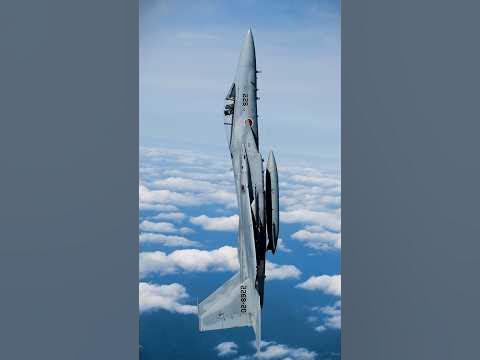
The question of which country possesses the largest air force is steeped in complexities that transcend mere numbers. Air power is a multifaceted component of national military strength, encapsulating not just the sheer number of aircraft but also their capabilities, technological advancements, and the strategic doctrines that govern their deployment. This article delves into the intricate details of military power rankings while shedding light on the nuances of air force superiority around the globe.
1. Defining Air Force Size and Strength
When discussing the largest air forces, it is critical to distinguish between quantitative and qualitative metrics. The former refers to the total number of aircraft in a country’s arsenal, which can include fighters, bombers, transport planes, and unmanned aerial vehicles (UAVs). Meanwhile, qualitative metrics consider the technology, training, and capabilities of these aircraft. For example, a nation may have a large fleet of older aircraft that are less capable than fewer, but more advanced systems fielded by another country. As a result, the size of an air force cannot solely be measured by numbers; effectiveness in combat, logistical support, and the ability to execute a variety of missions are equally essential.
2. The Global Ranking of Air Forces
In military power rankings, countries are assessed based on various parameters, including their air force capabilities. One of the recognized leaders in this domain is the United States, renowned for having the most technologically advanced and diverse air force in the world. Their aircraft range from stealth fighters like the F-22 Raptor and F-35 Lightning II to heavy bombers such as the B-2 Spirit. The U.S. Air Force’s strategic capabilities, in combination with its global reach, make it a formidable force.
Following the U.S., China has made significant strides in enhancing its air force capabilities. The People’s Liberation Army Air Force (PLAAF) has expanded its fleet, incorporating modern fighters like the Chengdu J-20, which highlights a shift towards advanced technology. Russia, too, possesses a potent air force known for its robust tactical acumen and diverse aircraft, including the Su-57 stealth fighter and the MiG-31 interceptor. Other nations also wield considerable air power, such as India, with its combination of indigenous designs and imported technology.
3. The Role of Technology in Air Forces
Technological advancements play an indispensable role in the effectiveness of modern air forces. Advanced avionics, stealth capabilities, and integrated air defense systems greatly enhance the operational efficacy of airpower. Countries investing in fifth-generation aircraft, artificial intelligence, and drones offer insights into future warfare paradigms. Nations with significant defense budgets can allocate substantial resources to research and development, ensuring they remain at the forefront of military innovation.
Furthermore, cyber capabilities are becoming equally vital. The ability to secure and manage data for operational purposes influences not just aircraft efficiency but overall mission success. This intersection of aviation and technology exhibits the sophisticated nature of modern air forces.
4. Strategic Doctrine and Operational Readiness
The size and capability of an air force must also be contextualized within its strategic doctrine. A nation’s military strategy dictates how its air force is structured and utilized. Countries such as the United States operate under a doctrine emphasizing global reach and rapid deployment, allowing for a flexible response to international crises. In contrast, nations with more regional focuses may prioritize different assets, such as anti-access/area denial (A2/AD) strategies, to protect their sovereignty.
Operational readiness is equally critical. Air forces that maintain rigorous training regimens and continual assessment of both personnel and equipment are better positioned for immediate response in times of conflict. Exercises, simulations, and collaborative missions with allies enhance readiness, improving interoperability and effectiveness in joint operations.
5. The Impact of Geopolitical Factors
Geopolitical dynamics significantly influence air force size and strength. Countries engaged in territorial disputes or facing external threats often prioritize military expansion, leading to increased investment in air power. For instance, tensions in various regions—whether in Eastern Europe, the South China Sea, or the Middle East—can catalyze military buildups. Additionally, alliances and treaties, such as NATO, shape air force capabilities as countries develop collaborative strategies that bolster collective defense.
6. Future Trends in Air Force Development
Looking toward the future, the evolution of air forces will likely be shaped by several trends. The integration of unmanned systems into traditional military operations represents a revolutionary shift. Drones are not merely supplementary; they are shaping combat tactics and strategies. Artificial intelligence applications in piloting, maintenance, and logistics offer a glimpse into a future wherein human decision-making can be augmented by machine learning.
The emphasis on sustainability within military frameworks also casts a shadow over future air force developments. As nations grapple with environmental concerns, the push for eco-friendly technologies in aviation—such as sustainable fuels and electric propulsion—will shape the industry. These advancements will redefine operational tactics while addressing ecological imperatives.
Conclusion
In summation, understanding which country has the largest air force necessitates an appreciation of both quantitative and qualitative factors. While numerical superiority plays a significant role, factors such as technology, strategy, readiness, and geopolitical context are equally decisive in evaluating military power. As global dynamics continue to evolve, so too will the nature and structure of air forces, marking an ongoing transformation in the realm of military power.
